FiltersFilter & Sort
- From $299 USDUnit price /Unavailable
Description

- Popular and early "Icebox" variety produces uniform 8" round heirloom watermelons
- Each fruit weighs appx. 8 - 12 lb
- Drought resistant variety
- Thrives in hot temperatures and direct sun
-
Days to Maturity | 75 days
-
Best Months to Plant | [April - June] Watermelons are heat-loving plants that need lots of sun. They grow on a long vine, so make sure to give them plenty of space to roam around.
- Popular and early "Icebox" variety produces uniform 8" round heirloom watermelons
- From $299 USDUnit price /Unavailable
Description

- A Tom Watson Watermelon Festival is held in Georgia each year in August at Hickory Hill in Thomson, Georgia. The Tom Watson Watermelon seed is a 1900 heirloom variety from Georgia
- Plant produces excellent yields of 40 lb watermelons
- Has a very sweet dark red flesh that makes your mouth water and quenches your thirst at the same time
- Has a very tough rind that makes it a great variety for shipping and can resist bruising -
Days to Maturity | 85 days
-
Best Months to Plant | [April - June] Watermelons are heat-loving plants that need lots of sun. They grow on a long vine, so make sure to give them plenty of space to roam around.
- A Tom Watson Watermelon Festival is held in Georgia each year in August at Hickory Hill in Thomson, Georgia. The Tom Watson Watermelon seed is a 1900 heirloom variety from Georgia
- From $299 USDUnit price /Unavailable
Description

Wheat (Organic), Hard Red
-
Hard, brownish, high-protein wheat used for bread and hard baked goods.
- Bread Flour and high-gluten flours are commonly made from.
- Certified Organic.
- Day to Maturity | 75 days
NOTE: THIS PRODUCT CANNOT BE SHIPPED TO CANADA. -
Hard, brownish, high-protein wheat used for bread and hard baked goods.
- From $299 USDUnit price /Unavailable
Description

- This variety has unusually large, thick pods that grow up to 5" long
- Medium green, flat pods are very tender and have a mild, sweet flavor that holds well into the season
- Vines grow 30-36 inches tall and are heavy producers making this variety one of the best producing snow peas available
- Shows resistance to common wilt, mosaic virus, and powdery mildew
-
Days to Maturity | 70 days
Peas are a cool season vegetable, and do best in a climate where there are two months of cool growing weather, either spring planting in the northern regions or fall planting in the warmer, southern regions. Plant seeds 4"-6" apart.
Click here for complete Pea grow guide
Additional Details
Peas are high in vitamin A, vitamin C, B vitamins and lutein. Dry weight is about one-quarter protein and one-quarter sugar.
- This variety has unusually large, thick pods that grow up to 5" long
- From $299 USDUnit price /Unavailable
Description

-
Produces excellent yields of 18" long yellow melons.
- The orange flesh is extremely tender and juicy
- Has a banana flavor
-
Days to Maturity | 90 days
-
Melon Seeds | Because of the long growing season, start plants indoors 4 to 5 weeks before outdoor planting time. Direct sow 4-5 seeds in a hill and then thin to the appropriate spacing.
Click here for complete Melon grow guide
-
Produces excellent yields of 18" long yellow melons.
- From $299 USDUnit price /Unavailable
Description

The Provider Bush Bean is great for all you impatient gardeners. It germinates in cool soil, so you can direct sow earlier than other beans, and matures in only 50 days. This high-yielding compact plant provides delicious 5"-6" stringless pods with purple beans inside.
- Germinates in cool soil
- Matures quickly—50 days
- Heavy producer
- Stringless variety
SEED PLANTING TIPS
- Botanical name: Phaseolus vulgaris
- Depth to plant seeds: 1" deep
- Spacing between plants: 4" apart
- Spacing between rows: 18"-24" apart
- Days to germinate (sprout): 5-10 days
- Germination soil temps: 60F-85F
- Soil needs: 6.0-7.0 pH
- Sun needs: Full sun
- Frost hardy: No
- Planting season: Spring, summer, fall
- # of plants per sq. ft.: Appx. 4 plants per sq. ft.
- Days to maturity: 50-55 days
Click here to view our full Bean grow guide
Good companion plants: Cucumber, Pea, Rosemary, Thyme, Tomato
- From $299 USDUnit price /Unavailable
Description
View all bean seeds
The Thorogreen Lima Bean is a high-yielding heirloom that loves higher temperatures. Plump, light green pods grow at the top of a compact plant for easy harvesting. Both fresh and dried beans have a smooth, buttery flavor. When eating fresh, be sure to cook them, as raw beans are toxic. This compact bush-type plant spreads wider than green beans, so give them room to grow.
- Easy to grow
- Bush growth habit
- Heat loving
- Early producer
SEED PLANTING TIPS
- Botanical name: Phaseolus lunatus
- Depth to plant seeds: 1.5" deep
- Spacing between plants: 6"-8" apart
- Spacing between rows: 24"-30" apart
- Days to germinate (sprout): 10-21 days
- Germination soil temps: 70F-90F
- Soil needs: 6.0-7.0 pH
- Sun needs: Full sun
- Frost hardy: No
- Planting season: Spring, summer, fall
- # of plants per sq. ft.: Appx. 2-4 plants per sq. ft.
- Days to maturity: 65-75 days
Click here to view our full Bean grow guide
Good companion plants: Cucumber, Pea, Rosemary, Thyme, Tomato
- From $299 USDUnit price /Unavailable
Description

- Produces deep purple radishes with a white flesh
- Looks incredible! Great for culinary dishes
- The white flesh is sweet and mild in flavor
- Great for selling at farmers markets
- Unique and rare heirloom radish
- Grows well in containers and small spaces
-
Days to Maturity | 25-30 days
Additional Details
Radishes are rich in ascorbic acid, folic acid, and potassium. They are a good source of vitamin B6, riboflavin, magnesium, copper, and calcium. One cup of sliced red radish bulbs provides approximately 20 calories, largely from carbohydrates
Follow SeedsNow.com's board Radishes on Pinterest. - Produces deep purple radishes with a white flesh
- From $299 USDUnit price /Unavailable
Description
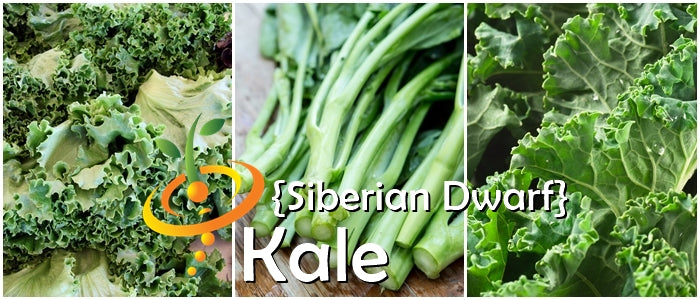
-
Early Kale variety produces flavorful leaves
- The dark-green leaves are finely curled and reach up to 8-12"
- Great when used fresh in salads or on sandwiches
- Can handle the cold extremely well
- Very good frost resistant kale variety
-
Days to Maturity | 50 days
-
Kale Seeds | Kale can be planted pretty much anywhere in the United States where there's a cool fall growing season. Plant Kale in rows 18 inches to 2 feet apart.
Click here for complete Kale grow guide
Additional DetailsKale is considered to be a highly nutritious vegetable with powerful antioxidant properties; kale is considered to be anti-inflammatory. Kale is very high in beta carotene, vitamin K, vitamin C, lutein, zeaxanthin, and reasonably rich in calcium.
Follow SeedsNow.com's board Kale on Pinterest. -
Early Kale variety produces flavorful leaves
- From $299 USDUnit price /Unavailable
Description
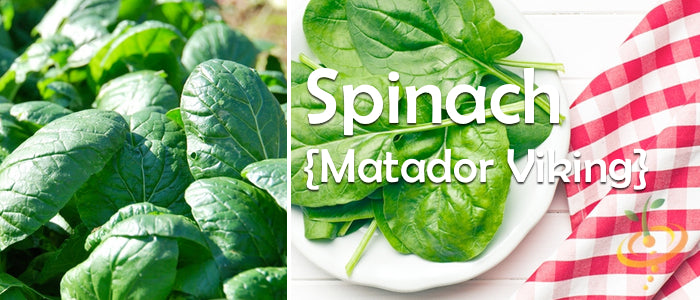
- Matador Viking Spinach will produce beautiful large and smooth dark green spinach leaves in only 45 days
- Excellent flavor
- Full of nutrients
- Extremely easy to grow
- Grows best during the cooler months
- Grows really well in containers and other small spaces
-
How to Grow | Spinach is very hardy and can tolerate cold — in fact, it thrives in cold weather. Spinach grows really well during winter months in the South. Spinach also grows well in early spring and late summer in the North. These seeds should be planted about four weeks before your area's average date of last frost.
-
Days to Maturity | 45 days
- Matador Viking Spinach will produce beautiful large and smooth dark green spinach leaves in only 45 days
- From $299 USDUnit price /Unavailable
Description
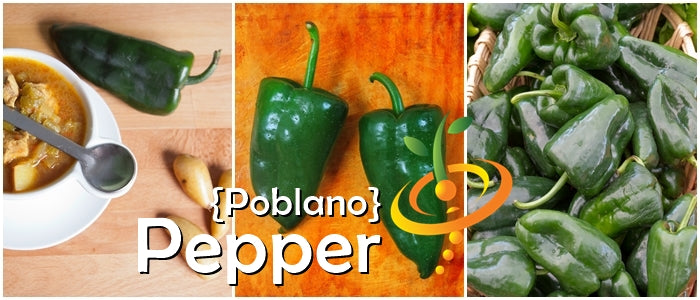
If you’re looking for the Chile Relleno pepper, you’ve found it. Except it goes by the name of Poblano. Prolific plants put out muchos 4"-8" thick-skinned, tapered fruits that start out a deep dark green with mild heat and earthy flavor. That’s when this pepper (chile) is most often roasted, peeled, and stuffed full (relleno) of meat and cheese. Let it ripen on the vine and the color changes to a deep dark brownish-red that’s much spicier. Or dry it, and you’ll have an Ancho pepper to flake or powder. This one will keep your oven busy all summer long.- Very high yields
- Earthy flavor
- Early producer
- Good for containers
SEED PLANTING TIPS
- Botanical name: Capsicum annuum
- Pepper length: 4"-8"
- Scoville heat units (SHU): 500-2,000/mild
- Plant support: Tomato cage or stake
- Depth to plant seeds: .25" deep
- Spacing between plants: 18"-24" apart
- Spacing between rows: 24"-36" apart
- Days to germinate (sprout): 7-21 days
- Germination soil temps: 75F-85F
- Soil needs: 6.0-7.0 pH
- Sun needs: Full sun
- Frost hardy: No
- Planting season: Spring, summer
- # of plants per sq. ft.: Appx. 1 plant per sq. ft.
- Days to maturity: 65-85 days
Good companion plants: Basil, Carrot, Cucumber, Eggplant, Okra, Rosemary, Sage, Squash, Tomato
All Peppers ⟐ Hot Peppers 📚 Hot Peppers Grow Guide - From $299 USDUnit price /Unavailable
Description
- Produces white radishes that grow to 1.5" in diameter
- The white flesh is crisp and mild in flavor
- Great for selling at farmers markets
- Grows well in containers and small spaces
-
Days to Maturity | 25-30 days
Additional DetailsRadishes are rich in ascorbic acid, folic acid, and potassium. They are a good source of vitamin B6, riboflavin, magnesium, copper, and calcium. One cup of sliced red radish bulbs provides approximately 20 calories, largely from carbohydrates
Follow SeedsNow.com's board Radishes on Pinterest. - Produces white radishes that grow to 1.5" in diameter
- From $299 USDUnit price /Unavailable
Description

- These Winter Giant spinach seeds will produce very flavorful large green spinach leaves
- Known for growing to a height of appx. 2 feet
- Days to Maturity | 45 days
- From $299 USDUnit price /Unavailable
Description

- Beautiful red lettuce leaves
- Curly leaves with really nice texture and color
- Extremely popular amongst gourmet chefs and restaurants
- Easy to grow and does not require a lot of space
-
Days to Maturity | 50 days
-
Lettuce Seeds | Lettuce can be grown practically anywhere. For leaf types seed should be sown thinly in rows 1 foot apart. For head, Bibb, and cos types, space rows 18 inches apart.
Click here for complete Lettuce grow guide
- Beautiful red lettuce leaves
- From $299 USDUnit price /Unavailable
Description

- Beautiful bright lime green lettuce leaves
- This is the green alternative to Lollo Rossa
- Compact and curly with amazing flavor
- Extremely popular amongst gourmet chefs and restaurants
- Easy to grow and does not require a lot of space
-
Days to Maturity | 50 days
-
Lettuce Seeds | Lettuce can be grown practically anywhere. For leaf types seed should be sown thinly in rows 1 foot apart. For head, Bibb, and cos types, space rows 18 inches apart.
Click here for complete Lettuce grow guide
- Beautiful bright lime green lettuce leaves
Tomato - Brandywine, Yellow (Indeterminate)
From $299 USDUnit price /UnavailableDescription

The Yellow Brandywine Tomato is just like the Pink Brandywine Tomato, except it’s yellow. Like siblings, these tomatoes probably shouldn’t be compared, but they really are ditto each other—ribbed shoulders, potato-leaf foliage, small seed core, sweet and tangy slicer, 1-2 lb fruits with no two alike. Except it’s yellow. And ripens a little sooner.
- Balanced flavor
- Golden yellow skin and flesh
- Potato-leaf foliage
- Good fresh or cooked
SEED PLANTING TIPS
- Botanical name: Solanum lycopersicum
- Growth type: Indeterminate, trellis support, regular pruning
- Tomato size: Large (1-2 lbs.)
- Depth to plant seeds: .25" deep
- Spacing between plants: 24"-36" apart
- Spacing between rows: 36"-48" apart
- Days to germinate (sprout): 7-14 days
- Germination soil temps: 75F-95F
- Soil needs: 6.0-6.5 pH
- Sun needs: Full sun
- Frost hardy: No
- Planting season: Spring, summer
- # of plants per sq. ft.: Appx. 1 plant per 3 sq. ft.
- Days to maturity: 85-90 days
Good companion plants: Basil, Borage, Onion, Parsley, Pepper
Tomato - Oxheart, Pink (Indeterminate)
From $299 USDUnit price /UnavailableDescription

Valentine’s Day is too early to grow the Pink Oxheart Tomato, but you’ll have all summer to court your sweetheart with these dark pink heart-shaped fruits. Juicy and meaty, this luscious slicer grows to 1-2 lbs. Its mild, sweet flavor is just right for a romantic picnic of tomato sandwiches, pizza and a movie, or marinated tomato tortellini by candlelight.
You may also like: Orange Oxheart Tomatoes ⟐ Yellow Oxheart Tomatoes- High yields
- Low acidity
- Small seed core
- Mild, sweet flavor
SEED PLANTING TIPS
- Botanical name: Solanum lycopersicum
- Growth type: Indeterminate, trellis support, regular pruning
- Tomato size: Large (1-2 lbs.)
- Depth to plant seeds: .25" deep
- Spacing between plants: 24" apart
- Spacing between rows: 36"-48" apart
- Days to germinate (sprout): 7-14 days
- Germination soil temps: 75F-95F
- Soil needs: 6.0-6.5 pH
- Sun needs: Full sun
- Frost hardy: No
- Planting season: Spring, summer
- # of plants per sq. ft.: Appx. 1 plant per 2 sq. ft.
- Days to maturity: 80-90 days
Click here to view our full Tomato grow guide
Good companion plants: Basil, Borage, Onion, Parsley, Pepper
Tomato - Manitoba (Determinate)
From $299 USDUnit price /UnavailableDescription
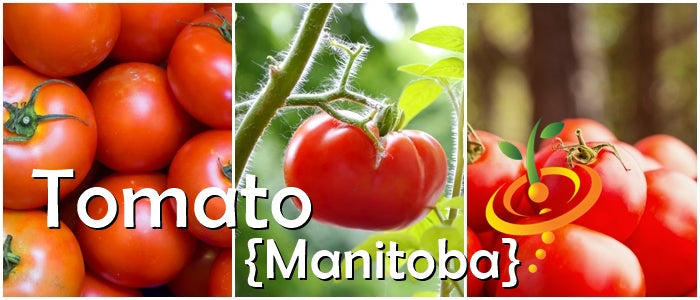
The Manitoba Tomato is an early producer, so it’s good for cooler climates with short growing seasons. Not to say that gardeners in warmer climates with long growing seasons can’t grow it. Basically, anyone in a grow zone that isn’t freezing or blazing for a couple of months can grow this tangy, juicy slicer. And it doesn’t even need a lot of garden space.
- Early producer—only 55 days
- Good for containers
- High yields
- Good for cooler climates
SEED PLANTING TIPS
- Botanical name: Solanum lycopersicum
- Growth type: Determinate, tomato cage support, no pruning
- Tomato size: Medium
- Depth to plant seeds: .25" deep
- Spacing between plants: 24" apart
- Spacing between rows: 36"-48" apart
- Days to germinate (sprout): 7-14 days
- Germination soil temps: 75F-95F
- Soil needs: 6.0-6.5 pH
- Sun needs: Full sun
- Frost hardy: No
- Planting season: Spring, summer
- # of plants per sq. ft.: Appx. 1 plant per 2 sq. ft.
- Days to maturity: 55-65 days
Click here to view our full Tomato grow guide
Good companion plants: Basil, Borage, Onion, Parsley, Pepper
Tomato - Beefsteak, Yellow (Indeterminate)
From $299 USDUnit price /UnavailableDescription
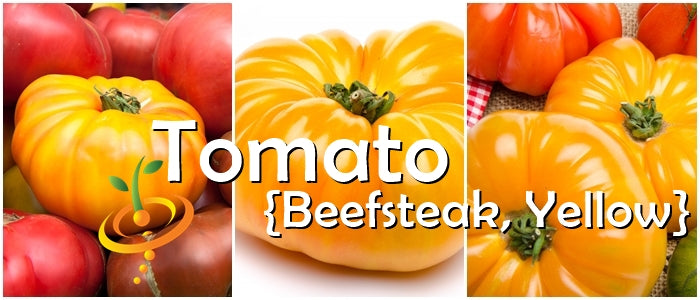
You’re looking for a big sunny tomato, you say? With low acidity and a small seed core, you say? Well, say hello to the Yellow Beefsteak Tomato. We see that “big” description, so prepare your table for 1-2 lb ribbed fruits that shine with mild sweetness. Now that you’ve got your perfect tomato, will you make a sunny salad or a golden tomato sauce?- Juicy slicer
- Sweet, mild flavor
- Small seed core
- Good fresh or cooked
SEED PLANTING INFO
- Botanical name: Solanum lycopersicum
- Growth type: Indeterminate, trellis support, regular pruning
- Tomato size: Large
- Depth to plant seeds: .25" deep
- Spacing between plants: 24"-36" apart
- Spacing between rows: 36"-48" apart
- Days to germinate (sprout): 7-14 days
- Germination soil temps: 75F-95F
- Soil needs: 6.0-6.5 pH
- Sun needs: Full sun
- Frost hardy: No
- Planting season: Spring, summer
- # of plants per sq. ft.: Appx. 1 plant per 3 sq. ft.
- Days to maturity: 75-85 days
Click here to view our full Tomato grow guide
Good companion plants: Basil, Borage, Onion, Parsley, Pepper
Tomato - Green Grape (Indeterminate)
From $299 USDUnit price /UnavailableDescription

The Green Grape Tomato produces clusters of 6-8 fruits on a compact plant all summer long. The slightly oblong 1" fruits turn a light yellow-green when ripe, with a sweet, sharp flavor that’s a bit like citrus. These look so much like green grapes, you may be tempted to make vino de tomato verde, but please resist.
- Sweet, citrus flavor
- Reliable producer
- High yields
- Good for containers
SEED PLANTING TIPS
- Botanical name: Solanum lycopersicum
- Growth type: Indeterminate, trellis support, regular pruning
- Tomato size: Small (1" oval)
- Depth to plant seeds: 1/8" deep
- Spacing between plants: 24" apart
- Spacing between rows: 36"-48" apart
- Days to germinate (sprout): 7-14 days
- Germination soil temps: 75F-95F
- Soil needs: 6.0-6.5 pH
- Sun needs: Full sun
- Frost hardy: No
- Planting season: Spring, summer
- # of plants per sq. ft.: Appx. 1 plant per 2 sq. ft.
- Days to maturity: 70-80 days
Click here to view our full Tomato grow guide
Good companion plants: Basil, Borage, Onion, Parsley, Pepper
Squash (Winter) - Hubbard, Blue
From $299 USDUnit price /UnavailableDescription

-
The Baby Blue Hubbard squash is popular 7 lb light blue/gray squash
- Grows as a vine (not as a bush)
- Orange/yellow colored flesh
- Very sweet and full of flavor - perfect for roasting or baking
- Ideal for any sized garden and easy to grow
- Days to Maturity | 100 days
Additional DetailsThough considered a vegetable in cooking, botanically speaking, squash is a fruit (being the receptacle for the plant's seeds). Squash can be served fresh (in salads) and cooked (squash stuffed with meat, fried squash, baked squash).
-
The Baby Blue Hubbard squash is popular 7 lb light blue/gray squash
- From $299 USDUnit price /Unavailable
Description

- A 1950 All-America Selections Winner
- These Congo watermelon seeds will produce a plant full of 35 lb watermelons
- Very tough rind that will resist bruising
- Extremely delicious -
Days to Maturity | 95 days
-
Best Months to Plant | [April - June] Watermelons are heat-loving plants that need lots of sun. They grow on a long vine, so make sure to give them plenty of space to roam around.
Follow SeedsNow.com's board Watermelon on Pinterest. - A 1950 All-America Selections Winner
- From $299 USDUnit price /Unavailable
Description

- Mild, sweet, onion-like flavor
- A very hardy variety
- Blue-green leaves resemble giant scallions
-
Days to Maturity | 100 days
-
Leek Seeds | Plant leeks in the spring, and late in the summer or fall. Plant leek seedlings 8-10 inches apart
Click here for complete Leek grow guide
- Mild, sweet, onion-like flavor
Onion - Lisbon, White (Bunching)
From $299 USDUnit price /UnavailableDescription

-
White Lisbon is a very popular type of bunching onion
- Dark green leaves with long white stalks
- Stores well after harvest
- Excellent for many culinary creations
- A hot and cold resistant variety
- This variety is usually planted in the spring but it's also a great fall/winter crop as well
- Grows well in containers and small spaces
- Easy to grow
-
Days to Maturity | 65 days
Onion Seeds | Onions are easy to grow, have a fairly short growing period and take up little space in the garden. Plant onions 1/4 inch deep and 3 to 4 inches apart in double rows, leaving 6 to 10 inches between rows.
Click here for complete Onion grow guide
-
White Lisbon is a very popular type of bunching onion
Onion - Crimson Forest (Bunching)
From $299 USDUnit price /UnavailableDescription

-
Crimson Forest is a rare heirloom
- Dark red, burgundy, and purple colors
- Excellent for many culinary creations
- Grows well in containers and small spaces
- Easy to grow
-
Days to Maturity | 60 days
Onion Seeds | Onions are easy to grow, have a fairly short growing period and take up little space in the garden. Plant onions 1/4 inch deep and 3 to 4 inches apart in double rows, leaving 6 to 10 inches between rows.
Click here for complete Onion grow guide
-
Crimson Forest is a rare heirloom
- From $299 USDUnit price /Unavailable
Description
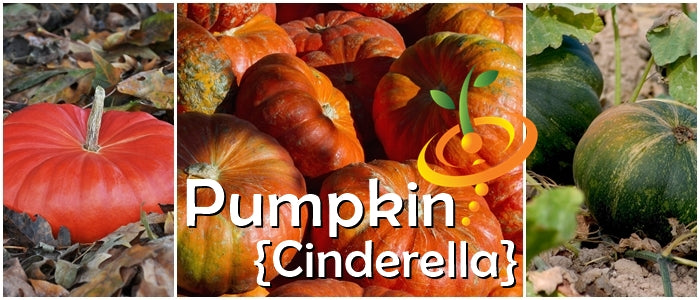
- The Cinderella is an old heirloom from France - looks just like the coach in the Cinderella fairy tale
- Plant produces medium-sized 25 lb. red/orange pumpkins
- This pumpkin has delicious flesh
- Days to Maturity | 100-110 days
Additional DetailsThe word pumpkin originates from the word pepon, which is Greek for “large melon". The French adapted this word to pompon, which the British changed to pumpion and later American colonists changed that to the word we use today, "pumpkin".
- The Cinderella is an old heirloom from France - looks just like the coach in the Cinderella fairy tale
- From $299 USDUnit price /Unavailable
Description

- The Yellow Paris is a very large pumpkin
- An old heirloom variety from France
- Days to Maturity | 100 days
Additional DetailsThe word pumpkin originates from the word pepon, which is Greek for “large melon". The French adapted this word to pompon, which the British changed to pumpion and later American colonists changed that to the word we use today, "pumpkin".
- The Yellow Paris is a very large pumpkin
- From $299 USDUnit price /Unavailable
Description

-
One of the key characteristics of crisphead lettuce is its high water content, which contributes to its refreshing crunch. This variety is also low in calories, making it a healthy choice for those looking to maintain a balanced diet. In addition, crisphead lettuce is a good source of vitamins A and K, as well as folate.
-
Crisphead lettuce is a type of compact butterhead lettuce that forms tight, dense heads. This variety is popular for its crisp texture and mild flavor, making it a versatile option for salads, sandwiches, and wraps.
-
Day to Maturity | 65 days
-
Lettuce Seeds | Lettuce can be grown practically anywhere. For leaf types seed should be sown thinly in rows 1 foot apart. For head, Bibb, and cos types, space rows 18 inches apart.
Click here for complete Lettuce grow guide
-
Lettuce - Black Seeded Simpson
From $299 USDUnit price /UnavailableDescription
- Easy to grow crisp leaf lettuce variety
- Grows really well in containers and tight spaces
- Perfect for hydroponic growers
- Excellent for salads and other culinary dishes
- A popular variety of lettuce for many chefs
-
Days to Maturity | 65 days
-
Lettuce Seeds | Lettuce can be grown practically anywhere. For leaf types seed should be sown thinly in rows 1 foot apart. For head, Bibb, and cos types, space rows 18 inches apart.
Click here for complete Lettuce grow guide
- Easy to grow crisp leaf lettuce variety
- From $299 USDUnit price /Unavailable
Description

- Also known as "Slippery Snake"
- Grows long light green snake-like shaped gourds
- Grows as a long vine
- If you like to grow gourds then you'll be sure to appreciate this one
- Also known as "Slippery Snake"
- From $299 USDUnit price /Unavailable
Description

- Just as the name suggests, this style of gourd will produce something that looks like a caveman's club
- Colors will vary
- Grows well in raised beds
- Just as the name suggests, this style of gourd will produce something that looks like a caveman's club
Sprouts/Microgreens - Basil, Green
From $299 USDUnit price /UnavailableDescription

- Basil sprouts are extremely easy to grow!
- Ready to eat in as little as a week.
- Great addition to many culinary creations.
- Excellent flavor and fragrance.
Sprouts/Microgreens - Basil, Purple
From $299 USDUnit price /UnavailableDescription

- Basil sprouts are extremely easy to grow!
- Ready to eat in as little as a week.
- Great addition to many culinary creations.
- Excellent flavor and fragrance.
You may also be interested in: Green Basil Sprouts & Micro-Greens
- From $299 USDUnit price /Unavailable
Description
Cabbage, Brunswick
- Brassica oleracea.
- A heirloom variety dating back to 1924.
- Plant produces a large drumhead type cabbage.
- Used for making kraut.
- Suitable for spring, summer, and fall crops.
- Stores well. Suitable for home gardens and market growers.
Click here for complete Cabbage grow guideAdditional Details
Did you know? ❄️ Cabbage is an annual cool-season crop, hardy to frost and light freezes. A smaller cabbage head has better flavor and can stay in the field longer without splitting. To keep them small, plant close together or, when the head is almost full, give the plant a sharp twist to break up the roots. 😀 Cabbage is a wide spreading foliage plant with handsome leaves that form a tight, hard ball head on a strong central stem. Young plants may bolt if grown at 50F for a long time; however mature plants of late varieties improve flavor in cold weather.
- From $299 USDUnit price /Unavailable
Description
- Produces good yields of 5" diameter multi color gourds
- This unusual gourds have 10 fingers pointing towards the blossom end
- Excellent for making crafts
Squash (Winter) - Burgess Buttercup
From $299 USDUnit price /UnavailableDescription
Squash (Winter), Burgess Buttercup
- Cucurbita maxima.
- Plant produces heavy yields of 8" long turban shaped green squash with silvery white stripes.
- The yellow orange flesh is very sweet and grows 3 to 5 lbs.
- The Burgess strain stores well.
-
A winter squash variety.
-
Day to Maturity | 90 days
- Cucurbita maxima.
- From $299 USDUnit price /Unavailable
Description
- Plant produces good yields of egg shaped tomatoes.
- The tomatoes are the size and shape of an egg.
- A firm tomato that keeps well. Does well in poor growing conditions.
SEED PLANTING TIPS
- Botanical name: Solanum lycopersicum
- Growth type: Indeterminate, trellis support, regular pruning
- Tomato size: Small
- Depth to plant seeds: 1/8" deep
- Spacing between plants: 24" apart
- Spacing between rows: 36"-48" apart
- Days to germinate (sprout): 7-14 days
- Germination soil temps: 75F-95F
- Soil needs: 6.0-6.5 pH
- Sun needs: Full sun
- Frost hardy: No
- Planting season: Spring, summer
- # of plants per sq. ft.: Appx. 1 plant per 2 sq. ft.
- Days to maturity: 75-80 days
Click here to view our full Tomato grow guide
Good companion plants: Basil, Borage, Onion, Parsley, Pepper
- Plant produces good yields of egg shaped tomatoes.
Sprouts/Microgreens - Bean, Mung
From $299 USDUnit price /UnavailableDescription
These delicious sprouts are popular and common as an integral part of Asian cuisine. Mung bean sprouts are quite thick and are crunchy with a nutty taste – mild and fresh. These can be served with salads, sprinkled as crunchy toppings, used in stir-fry, or simply enjoyed by themselves.
- From $299 USDUnit price /Unavailable
Description
- (Citrullus lanatus) This is a HUGE watermelon variety that can grow up to 200 LBS!
- Very flavorful crisp bright red flesh
- The rind is striped and resistant to bruising -
Days to Maturity | 95 days
-
Best Months to Plant | [April - June] Watermelons are heat-loving plants that need lots of sun. They grow on a long vine, so make sure to give them plenty of space to roam around.
Follow SeedsNow.com's board Watermelon on Pinterest. - (Citrullus lanatus) This is a HUGE watermelon variety that can grow up to 200 LBS!
Epsom Salts Soil Fertilizer (THE BEST!)
From $299 USDUnit price /UnavailableDescription
OMRI LISTED & APPROVED for Organic Use
One of the BEST fertilizers you will come across is EPSOM salts. Just mix into your soil and see amazing results!
Read: How and Why you should add Epsom Salts to Soil Now
EPSOM salts contain both magnesium and sulfur, two very important elements required for healthy plant growth.
When used in your garden as a natural source of magnesium... roses, tomatoes and peppers will thrive! You'll see your plants develop more "bushy", and deeper in color. Some gardeners boast their plants develop more blooms which will in turn provide larger yields of fruit especially on those tomato and pepper plants.Here are some ways to use EPSOM salts in the garden:
- METHOD #1: When planting, add one tablespoon (equivalent to 1 sampler pack) of EPSOM salts into the hole you've created,
- METHOD #2: Try mixing one tablespoon of EPSOM salts into a one gallon container filled with water. Now water the roots of your plant, directly after planting. Avoid getting this mixture on the leaves
Read: How and Why you really should add Epsom Salts to to your soil Now
Read: Introduction to Fertilizers
Read: Introduction to Soil Amendements- METHOD #1: When planting, add one tablespoon (equivalent to 1 sampler pack) of EPSOM salts into the hole you've created,
Garlic - (Soft Neck) Early Purple Italian (Organic)
From $299 USDUnit price /UnavailableDescription

Quick Overview
• Organic• Best Seller!
• Early
• An excellent variety for hot climates• Mild Flavor
• Purple stripes
Details
The bulb is large and white-skinned with purple stripes and numerous small cloves. Widely grown around Gilroy, California, the "garlic capital" of the world.How to Plant Garlic
Garlic can be planted in the spring as soon as the ground can be worked, but fall planting is recommended. Bulbs will grow bigger and more flavorful when you plant them in the fall. Plant 6 to 8 weeks before your first hard frost. In southern areas, February or March can be a better time to plant.
Key Planting Info:
- Break apart cloves from bulb but keep the papery husk on each individual clove.
- Ensure soil is well-drained with plenty of organic matter. Plant in Full Sun.
- Plant 4 inches apart & 2 inches deep, in their upright position (the wide end down and pointed end facing up).
- Come springtime, shoots will begin to emerge.
Click here for a more detailed Garlic Grow Guide ->Garlic - (Soft Neck) Nootka Rose (Organic)
From $299 USDUnit price /UnavailableDescription

This heirloom garlic has medium to large bulb.
- Beautifully bright white skin with light rose-colored streaked cloves
- Very attractive for braiding.
- Excellent flavor.
- Strong flavor.
- In rich soil, cloves can lose their rosy hue.
- This variety of garlic has long shelf-life and will store well into next spring or even summer.
How to Plant Garlic
Garlic can be planted in the spring as soon as the ground can be worked, but fall planting is recommended. Bulbs will grow bigger and more flavorful when you plant them in the fall. Plant 6 to 8 weeks before your first hard frost. In southern areas, February or March can be a better time to plant.
Key Planting Info:
- Break apart cloves from bulb but keep the papery husk on each individual clove.
- Ensure soil is well-drained with plenty of organic matter. Plant in Full Sun.
- Plant 4 inches apart & 2 inches deep, in their upright position (the wide end down and pointed end facing up).
- Come springtime, shoots will begin to emerge.
Garlic - (Soft Neck) Silver Rose
From $299 USDUnit price /UnavailableDescription

This heirloom garlic has medium to large bulb.
- Rose-colored cloves in very smooth bright-white bulbs.
- Mild flavor
- Beautiful garlic to braid!
- The longest-storing garlic we sell.
- Fast-growing garlic.
- Very popular in western and southern US and in France and Italy.
How to Plant Garlic
Garlic can be planted in the spring as soon as the ground can be worked, but fall planting is recommended. Bulbs will grow bigger and more flavorful when you plant them in the fall. Plant 6 to 8 weeks before your first hard frost. In southern areas, February or March can be a better time to plant.
Key Planting Info:
- Break apart cloves from bulb but keep the papery husk on each individual clove.
- Ensure soil is well-drained with plenty of organic matter. Plant in Full Sun.
- Plant 4 inches apart & 2 inches deep, in their upright position (the wide end down and pointed end facing up).
- Come springtime, shoots will begin to emerge.
Click here for a more detailed Garlic Grow Guide ->- From $299 USDUnit price /Unavailable
Description
Mugwort, Herb
- 85 days.
- Artemisia vulgaris.
- Perennial.
- Plant produces beautiful fragrant leaves.
- Used to make tea to treat menstrual and menopausal problem.
- Stimulates and improves memory.
- Easy to grow.
Onion (Sets) - Ebenezer, White
From $299 USDUnit price /UnavailableDescription

Quick Overview
Medium sized, flat, onion with thin, unnoticeable translucent white skin with less waste when prepared. Fine, grained flesh, popular for pickling. Excellent keeper.
They are technically long day onions. However, they can be grown anywhere, down south they will be more grown like big scallions.
How to Plant Bulb Onions
Onion bulbs are quite hardy and can withstand 20° F frost. They should be set out 4-6 weeks prior to the last expected frost. When your plants arrive they should appear to be quite dry. DO NOT WET THEM NOR STICK THEIR ROOTS IN WATER. Unpack them and store them in a cool, dry place until it is time to plant. They should last about 3 weeks kept this way. Do not worry that your plants seem dry. They will "shoot" new roots and new, green tops as soon as they are planted.
- From $299 USDUnit price /Unavailable
Description

Quick Overview
Bronze yellow skin, mild, and sweet. Plant them close together if you want fast growing scallions.They are technically long day onions. However, they can be grown anywhere, down south they will be more grown like big scallions.
How to Plant Bulb Onions
Onion bulbs are quite hardy and can withstand 20° F frost. They should be set out 4-6 weeks prior to the last expected frost. When your plants arrive they should appear to be quite dry. DO NOT WET THEM NOR STICK THEIR ROOTS IN WATER. Unpack them and store them in a cool, dry place until it is time to plant. They should last about 3 weeks kept this way. Do not worry that your plants seem dry. They will "shoot" new roots and new, green tops as soon as they are planted. Onion (Sets) - Wethersfield, Red
From $299 USDUnit price /UnavailableDescription

Quick Overview
Large globe with very thin, reddish-purple colored skin.
The white flesh is very firm and tinged with pink or purple highlights.
Fine strong flavor, vigorous.They are technically long day onions. However, they can be grown anywhere, down south they will be more grown like big scallions.
How to Plant Bulb Onions
Onion bulbs are quite hardy and can withstand 20° F frost. They should be set out 4-6 weeks prior to the last expected frost. When your plants arrive they should appear to be quite dry. DO NOT WET THEM NOR STICK THEIR ROOTS IN WATER. Unpack them and store them in a cool, dry place until it is time to plant. They should last about 3 weeks kept this way. Do not worry that your plants seem dry. They will "shoot" new roots and new, green tops as soon as they are planted.

⭐ FEATURED COLLECTIONS
View all seeds listed A-Zcontinue shopping



































































































































































































































